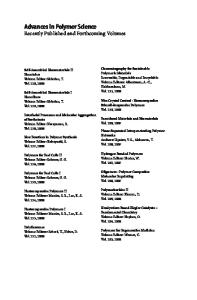Modified carbon nanotubes as broadband optical limiting nanomaterials
- PDF / 371,680 Bytes
- 9 Pages / 612 x 792 pts (letter) Page_size
- 77 Downloads / 407 Views
Amarsinh Gohel, Hendry Izaac Elim, Weizhe Chen, and Wei Ji Department of Physics, National University of Singapore, Singapore 117542
Ghee Lee Chong NUS Nanoscience and Nanotechnology Initiative, National University of Singapore (NUS), Singapore 117542
Chorng Haur Sow and Andrew T.S. Weea) NUS Nanoscience and Nanotechnology Initiative, and Department of Physics, National University of Singapore (NUS), Singapore 117542 (Received 31 March 2006; accepted 27 June 2006)
Carbon nanotubes have been shown to be effective broadband optical limiters for nanosecond laser pulses. In this paper, we review the recent developments of carbon nanotube-based optical limiters, in particular the effects of modifying carbon nanotubes for device applications. The techniques used to modify carbon nanotubes mainly include thin film coating, doping, and blending with optical absorbing dye. These modifications can greatly enhance the optical limiting performance of carbon nanotubes, with the goal of fabricating an optimal optical limiter system.
I. INTRODUCTION
Photonic technologies based on carbon nanomaterials have attracted significant attention due to their promising applications in protective coatings, field emission devices, and ultrafast photonic switches.1–3 In particular, optical limiting has been shown to be one of the important properties of carbon nanocomposites, including nanoparticles and nanotubes.4,5 A good optical limiter is a device that can maintain linear transmittance (about 70%) at weak fluence and low transmittance under high laser fluence. Such devices are important for protective applications for optical sensors and the human eye. While carbon nanotubes (CNT) are well known for their unique mechanical and electrical properties, researchers have observed strong nonlinear optical effects for both single-walled and multi-walled nanotubes.5–7 Because high-power laser sources are widely used in many applications in both research laboratories and industry, the need for more effective optical limiting materials for sensors and eye protection is growing rapidly.
a)
Address all correspondence to this author. e-mail: [email protected] DOI: 10.1557/JMR.2006.0338 2758
J. Mater. Res., Vol. 21, No. 11, Nov 2006
However, the development of optical limiters is a challenging task as materials that exhibit good optical limiting and can withstand intense laser pulses are scarce. The search for promising and effective optical limiters has motivated many researchers to investigate carbon nanomaterials, especially CNT, as it has been shown to be a broadband optical limiting material.1,8–10 The broadband feature is particularly important due to the possibility of strong laser emission at nearly every wavelength by modern laser systems. Generally, an ideal optical limiting material should possess three main features. First, it should have a low fluence threshold. The activation threshold for the limiting effect must be as low as possible for protection applications. Above this fluence, the transmittance will become highly nonline
Data Loading...











